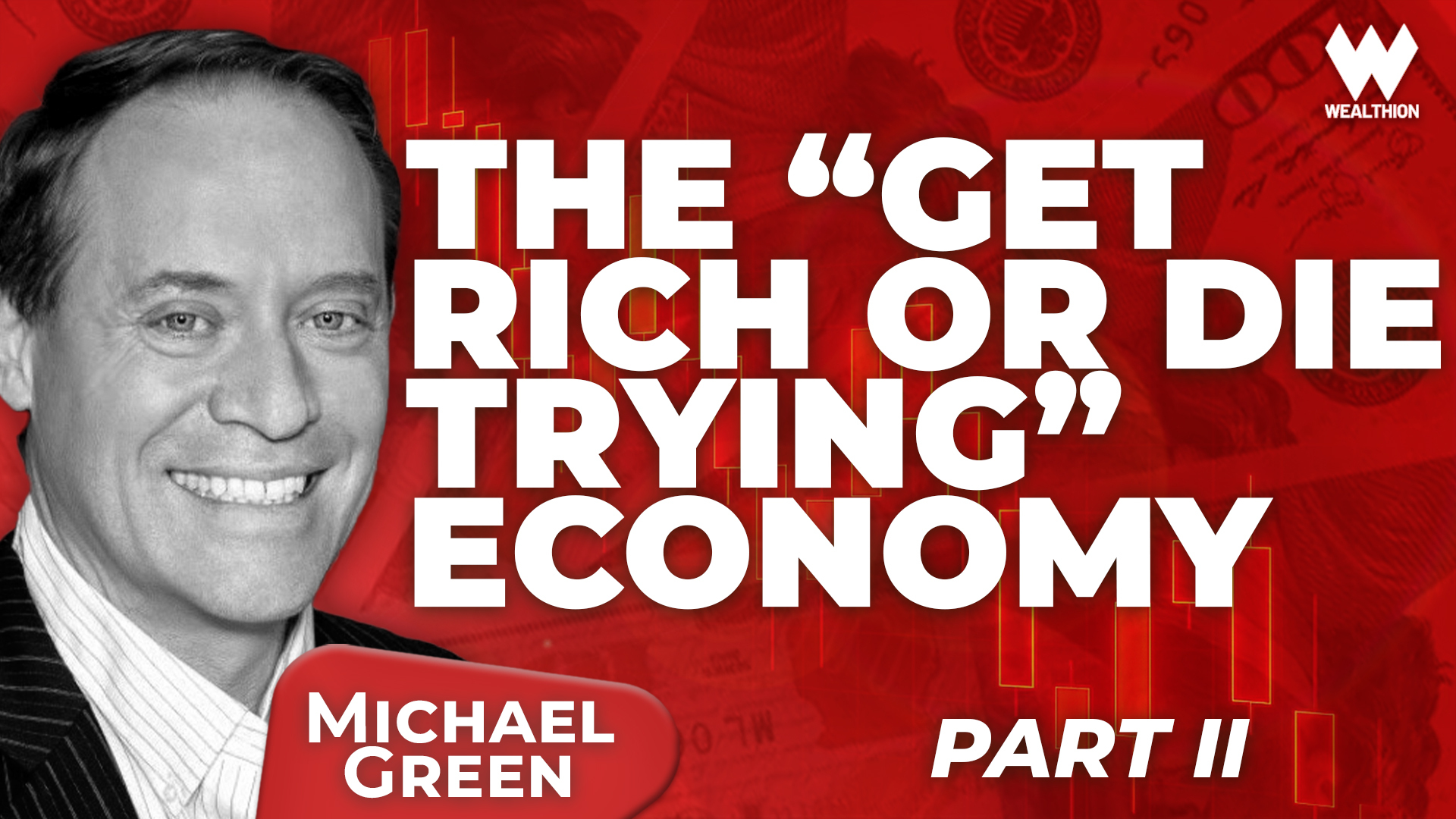In this week’s episode of “Next Week on the Trading Floor,” host Andrew Brill and special guest Jon Najarian from Market Rebellion delve into the dynamic world of stock splits, with a spotlight on Nvidia’s recent 10-for-1 split and its AI-driven rise. They also explore the intricacies of reverse stock splits, using Virgin Galactic as a prime example. As AI continues to revolutionize tech stocks, Jon breaks down how companies like Broadcom and ARM Holdings are shaping the future. Plus, a look into the power demands of AI and the potential role of nuclear energy in meeting those needs. Nvidia’s Stock Split: Details of Nvidia’s 10-for-1 stock split. The impact of the split on Nvidia’s stock price and accessibility for investors. Stock Splits Explained: The difference between traditional stock splits and reverse stock splits. Examples of companies conducting these splits, such as Nvidia and Virgin Galactic. Artificial Intelligence (AI) Trends: The role of AI in driving stock performance, particularly in tech companies like Nvidia and Broadcom. AI’s increasing influence on data centers and related industries. Power Demands of AI: The significant power requirements of AI technologies and data centers. The potential for increased use of natural gas and nuclear energy to meet these demands. AI-Linked Stocks: Insights into other AI-linked stocks, including ARM Holdings, Super Micro Computer, and Dell. Discussion of Elon Musk’s ventures in AI and their implications for the market.
Andrew Brill 00:05
Welcome to next week on the trading floor. I’m your host here on wealthy. I’m Andrew brill, and we’re
here to help you keep and grow your money. Next week on the trading floor was developed to explore
current trading ideas, market trends and opportunities to watch. It’s real time insight to help you make
informed decisions in the ever evolving financial markets and in conjunction with market rebellion will
give you pics that will help you in the week ahead. I would like to welcome back Jon Najarian of market
rebellion. John, nice to have you back with us this week. John, let’s start here with Nvidia. It’s now two
weeks since the stock split, a one on a roll going up about 70% Since the split but it’s now coming back
to Earth. Yeah,
Jon Najarian 00:49
well, Andrew, and Vidya. It’s all about AI. I mean, this stock rocked to the upside after that 10 For one
stock split now was that the primary driver, it did make the stock accessible to a lot more investors. We
all know that when you do a one for 10 stock split, you’re gonna have 10 times as many shares at 1/10
of the price. So basically, nothing changed. It’s the same thing. By the way, when you do a reverse
stock split. And people are doing that I’ll touch on it in a sec. But when you’re doing a stock split, a
traditional stock split, it’s because your share price has run to a point where it is unattainable for some
people to be able to trade it, invest in it and so forth. Classic example, Warren Buffett’s Berkshire
Hathaway, it’s in the hundreds of 1000s of dollars. That’s per share, folks, one share a single share will
set you back more than the most expensive home in 90% of America. That’s the way that stock
operates. And Warren Buffett has no intention of cutting that one. So they have a baby Berkshire, that
trades at a fraction of that. And even that is pretty expensive. But these days with these trillion dollar
monsters, like Nvidia, and for instance, an up and coming trillion dollar monster, like Broadcom, symbol
AV, Gio, you’ve got people that are doing these 10 For one stock splits, because an $800 Stock $1,300
Stock is just too difficult, again, for most people to trade to invest in and so forth. And it’s not just for the
investor class, that the Board of Directors decides to do these stock splits. They do it because of their
employees as well, because, as you might imagine, some of these employees can become crazy rich
through their stock ownership plans, good for them. But the access for them trading out of these
shares, hedging these shares, all that sort of stuff is just as difficult as it is for Joe and Jane, who have
never worked for Broadcom never worked for Nvidia. So they do these stock splits to make the stocks
more attainable, more easily, hedge double and so forth. Now, reverse stock splits are pretty much the
opposite. We’ve seen that with the likes of OLED See, Virgin Galactic, for instance. Now this was a
stock that people were big believers in, even though it just took people to the just under outer space, if
you will. Blue Origin. Jeff Bezos is other company, along with Elon Musk’s SpaceX can both take you
out into space, but Virgin Galactic doesn’t have the ability to even take you out into space, and the
stock has fallen and fallen and fallen to where it’s under $1. Well, it’s gonna get delisted from the
exchanges, if it doesn’t trade back up over that $5 level. And so what they do is they do a reverse stock
split, which is the exact opposite Andrew, of what Nvidia is doing a one for 10 stock split means like I
said 10 times as many shares at 1/10 the price. So if you run that the opposite direction, if you’ve got a
33 cent stock, and you’d like to make it a $3.30 cent stock, you’re doing a one for 10 reverse stock split,
in which case, you’re going to get the stock price 10 times higher, but you’re going to have a significant
debt. different moves than Nvidia with 10 times as many shares nope, 1/10 as many shares. So two
different ways of looking at stock splits one, the traditional stock split, the other a one for 10, or even a
one for 30. To get the stock back up over a minimum listing level are things that people do out of both
desperation and the desire to keep that stock listed on the big exchanges rather than going to bulletin
boards and so forth. Additionally, there are a lot of firms, hedge funds, and endowments and things like
that, where they have a mandate to not trade stocks that are under $5 A share is that a law it’s not a
law, but a lot of people adopt that. And they simply will not trade a stock that isn’t at least $5 a share.
So several reasons why these reverse stock splits are very popular and people are out there soliciting
from their board of directors and opinion that lets them do a one for 10 or a one for 30. reverse stock
split, which is what Virgin Galactic is going through.
Andrew Brill 06:18
John, what about some of the other stocks that are linked to the artificial intelligence craze, as we’ll call
it? Now,
Jon Najarian 06:25
as far as some of the other things that we were watching this week, AI is part of everything. Ai, whether
it’s Nvidia, whether it’s Broadcom, which any chip stock really, that is involved in a data center could be
part of AI, certainly chips and DRAM dynamic random access memory. Things like micron are very big
in data centers. But additionally, you’ve got ARM Holdings AR m, that is very much a part of these data
centers. You’ve got Elon Musk talking about Super micro computer s See, am I super micro computer s
MCI sorry, s CI. And why do they care about that? Well, because both Dell and Supermicro, they
handle a lot of the rack systems that go into these data centers. Because when they say cloud folks
think data center, it just means it’s not your data center. It’s a cloud that is accessed through the net,
whether it’s a direct connection, or otherwise, to basically let people not have to have all of those racks
of servers, and a clean room and all the rest of it like we used to have. So instead, they’re more or less
shared in a data center. And Elon Musk said that Dell DLL, as well as super micro are two of his
choices for x ai. Now, the X in front implies, of course that Elon Musk loves x, and the AI Artificial
Intelligence. That’s his competitor to Chet GPT, which he was one of the founding members of, along
with Mr. Sam Altman, and so forth. These are folks who are experimenting and moving to higher and
higher levels of artificial intelligence, which as I’ve already said, requires a lot of power in the data
center. That power is drawn from everything, folks from natural gas, which is like instance, on power,
when you don’t have enough power, and you have a coal fired power plant, it is taken over by natural
Transcribed by https://otter.ai2
gas, because natural gas, you can turn that on and start boiling water and turning turbines immediately.
Similarly, if you have solar, wind, or even geothermal, in some cases, those aren’t available at peak
hours. And so they need something that can be instantly turned on. And nine times out of 10, maybe
more, that is natural gas. Now Pete was on last week with Maria Bartiromo, talking about the thirsty AI
how thirsty it is for power. And it’s somewhere between 11 and 17 times the power that’s drawn from a
normal internet search. So when you ask instead, Chet GPT Chechi PT is drawing a massive amount
of power to do that search to do that, to write that paragraph to produce that play, to produce that film to
actually do a video for you. That’s all done by artificial intelligence. That’s a massive pull of power. And
most grids will soon be strained all the way to their breaking point by that. So how do you deal with
that? Well, in my opinion, and Pete’s opinion, you’re going to have an awful lot more on the nuclear
side, to basically fulfill that demand for power. So we’ve talked about in video, we’ve talked about AI,
and the power that’s necessary for it. And I think it’s also reasonable that we talked about stock splits,
and so forth, because we’re seeing so many of them just recently, everything from the NVIDIA one for
10 to the inverse or reverse stock split, which would be Virgin Galactic, for instance, SPC II. So those
are a few of the thoughts that we had on new to the trading floor, what happened on the trading floor
this week, and so forth. Those are some of the things that we were thinking about. I’ll leave you with the
rest of it, Andrew and say, we look forward to seeing you guys after the fourth of July
Andrew Brill 11:06
holiday. So there you have it, John. And market rebellion is basically watching all things AI. They’re
also keeping their eye on some of the power suppliers that are building the platforms to display the
power so that AI can provide all of us with the information we need. A couple of names that they’ve
thrown out in the past Palantir, who provides a lot of AI to military applications, and chemical which
supplies the power with which AI functions. Thank you for watching next week on the trading floor. We
hope you enjoy the insights and forward looking information from John and market rebellion. If you
need help being financially resilient, please head over to wealthy on.com and sign up for a free no
obligation portfolio review with one of our registered investment advisors. If you want to find out more
about options trading, head on over to market rebellion.com And remember to follow us John and
market rebellion on social media for the latest news and information to help you invest wisely. If you
could like and subscribe to the channel, we’d greatly appreciate it. Don’t forget to hit the notification bell
so you can find out when we post new videos to the channel. Thanks again for watching. We’ll see you
next week on the trading floor.



